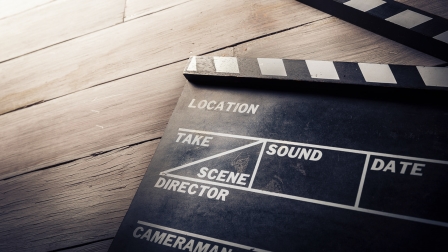Brands, creators wrestle with sound’s role in social videos
With Facebook advocating for audio-optional videos and Snapchat proving mobile viewers aren’t audio-averse, brands and creators revisit the role of sound.

Producing videos for social platforms is more complicated than taking officewide Starbucks orders.
A year ago, brands and publishers were wrestling with whether and how to make vertical and square versions of the horizontal videos they had traditionally produced and posted to YouTube and, more recently, Facebook. And that was just visual formatting. Now they have to consider not only how people may view a video, but also whether they’ll listen to it.
Until about a month ago, the dilemma seemed to be getting easier. Facebook had been telling brands and publishers to create videos that could be watched with or without sound, and some publishers were putting out stats backing up Facebook’s point. LittleThings and Mic told Digiday that 85 percent of their Facebook video views happened without sound, and Render Media CEO Vic Belonogoff told me that his food site, Cooking Panda, sees 80 percent of its Facebook videos watched without sound. Given Facebook’s dominant position, some brands and publishers took that to mean that socially distributed mobile videos in general needed to be audio-optional.
“Because Facebook is such a big part of the video ecosystem today, especially in mobile, clients, creatives, people on the agency side, even our directors — all of us are thinking about how are we going to tell a story if the end usage is on mobile in an audio-agnostic way,” said Greg Manago, Co-President of Mindshare Content + Entertainment.
But it turns out that mobile doesn’t always equate to silent cinema. In early June, Snapchat announced that two-thirds of the videos posted to its mobile app are viewed with the sound on. That stat “totally took me aback,” said Gloria DeCoste, Head of Digital Strategy at Nestlé USA.
“Snapchat’s report that two-thirds of its videos are viewed with the sound on is definitely somewhat alarming and runs against that narrative that Facebook has been telling the brand community. But all in all they’re two different platforms that perform two entirely different functions,” said Tim Staples, CEO of production studio Shareability.
Instead of disproving Facebook’s audio-optional prodding, Snapchat’s stat seems to have reinforced the idea that brands and publishers must be producing many different versions of their videos.
“When it comes to producing the content, we need to make sure we have both [audio-friendly and audio-optional versions of a video],” said Berta De Pablos-Barbier, VP of Marketing at Mars Chocolate North America.
“It’s not an either-or; it’s both,” said Valerie Vargas, VP of Advertising and Marketing Communications at AT&T.
But producing one version of a video that can be watched without sound and another where the sound is important isn’t as easy as cropping a vertical video from a horizontal clip. Sure, brands and creators can try to pack a bigger punch within the first five seconds of a video to entice people to turn the sound on. And they can add captions or visuals to their videos if they don’t want their muted viewers to miss anything important. But there’s a big difference between watching a video set in Times Square and being able to hear the bustling bodies versus reading the words “[street noise]” on the screen.
“Something that sound can really help you to do is set the mood,” said Manago. “It puts you in a place.”
Not being able to incorporate sound — or at least being unsure whether viewers will hear the sound — “doesn’t just change the audio. It changes how we shoot stuff, how we’re going to tell a story,” said Manago.
And it’s causing video makers to rethink how they had been taught to tell a story. Many of them have been trained on the importance of sound, the way it can be used to set a scene or communicate a feeling that can’t be captured as well or alone visually. A graduate of New York University’s Tisch School of the Arts, Manago said film students are taught the importance of sound on the first day of class. “They want you to be thinking about how to tell a story with sound before you tell a story with visuals,” he said.
“I think video without sound is lesser than video with sound. You’re not going to be as engaged in the content as you would be with sound,” said Staples. “That being said, that doesn’t mean video without sound doesn’t have value.”
Brands and creators alike are still in the process of unearthing the value in audio-optional video, beyond standing a better shot of being watched by Facebook’s audience. But the sound on or off dilemma has reinforced one valuable insight. Brands and creators need to be more mindful than ever of the audience who will be watching — and maybe hearing — their videos. Just as brands can’t assume a video audience is an auditory one, they also can’t assume a mobile video audience is *not* an auditory one because Facebook says so. Or that it is because Snapchat says so.
“I want to say that 70 percent of my audience [on Snapchat] is watching with audio off,” said Shaun McBride, a popular Snapchat and YouTube creator who goes by the name “Shonduras.” Instead of serving those viewers videos that try to get them to turn up the volume, he serves ones that serve their viewing behavior.
“I make my content for the 70 percent of my audience who will not be able to hear it. Audio is just a bonus,” McBride said, adding that uses a lot of songs as the background sound for that minority share of viewers who are listening.
Marketing Land – Internet Marketing News, Strategies & Tips
(22)



